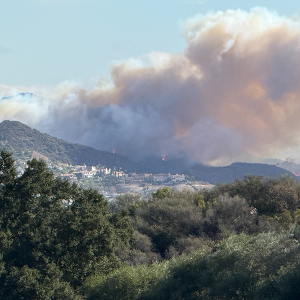
Researchers Continue Gathering Data on California Fires
Following the catastrophic fires that impacted Los Angeles and Ventura counties in January 2025, the research team from the Fire Safety Research Institute (FSRI), a part of UL Research Institutes, deployed to California to begin data collection for an independent analysis of the event. They continue working in the fire-affected regions to gather critical evidence for a comprehensive analysis that will assess the prevention, preparedness, and response strategies used during the incident. Researchers are embedded in the affected communities working directly with residents, first responders and local officials to build a comprehensive timeline of events and conditions that will inform the analysis of efficacy of the response.
Ground Data Collection Is Complete
Soon after the Eaton and Palisades fires were extinguished, FSRI engineers and partners were on the ground in California for in-depth field data collection. They utilized CAL FIRE Damage Inspection (DINS) Program data to identify structures that were damaged, but not destroyed, to target for further investigation. On these properties, engineers evaluated the condition of the structures (including fencing), ornamental vegetation, and measured separation distances and window properties, factors that our heat transfer research has found to contribute to fire spread.
FSRI engineers and analysts also engaged with residents in affected neighborhoods to gather firsthand accounts. Resident photos and videos shared with FSRI provide invaluable information through time stamps and location data. A survey available in multiple languages was developed and shared publicly for residents who did not directly interact with our team but were willing to contribute. Each submission helps place more pins on the fire progression map for the development of a detailed, accurate timeline of the fires.
Watch the video below to follow the researchers and analysts through a day of ground data collection.
Incident Data Collection Continues
The team began collecting relevant incident data from fire departments, law enforcement agencies, emergency management agencies, and state, federal, and private cooperating organizations shortly after the incident. Technical discussions with officials and data requests are underway and being prioritized based on value in establishing the timeline and understanding the factual conditions that existed before and during the incident to provide the most accurate representation of the fire progression and corresponding response efforts.
Engineers will use the data collected to piece together a detailed timeline of preparedness efforts, fire progression, evacuation activities, emergency response, and fire suppression actions based on a comprehensive array of data sources including radio communications and transcripts, video, images (still images or image capture from digital videos), emergency logs, technical discussions with authorities and residents, text and phone logs, email records, automatic vehicle location applications, social media posts, witness accounts, and corroborated personal experiences.
"To develop a comprehensive timeline, it is essential to conduct interviews with personnel from fire service and law enforcement agencies, as well as professionals working in prevention and preparedness roles. This represents a significant operational undertaking requiring coordination across multiple agencies and stakeholders."
Derek Alkonis
Research Program Manager
UL Research Institutes | Fire Safety Research Institute

